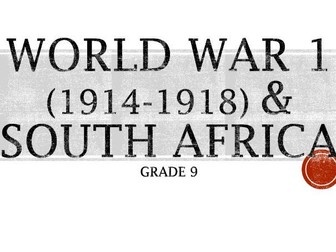Interne Weerstand Suid-Afrika en Apartheid
<p>Interne Weerstand in Suid-Afrika verwys na die verskeie vorme van protes, aktivisme, en opposisiebewegings wat binne die land teen die apartheidstelsel ontstaan het. Apartheid, 'n stelsel van geïnstitutionaliseerde rasse-segregasie en diskriminasie, het wye ontevredenheid en weerstand onder Suid-Afrikaners van alle rasse-agtergronde veroorsaak.</p>
<p>Vanaf die 1950’s het weerstandsbewegings soos die African National Congress (ANC), Pan Africanist Congress (PAC), en Black Consciousness Movement (BCM) pogings aangevoer om apartheidbeleide deur middel van nie-gewelddadige protesaksies, burgerlike ongehoorsaamheid, stakings, en boikotte uit te daag. Hierdie bewegings het diverse sektore van die samelewing gemobiliseer, insluitende studente, werkers, godsdienstige leiers, en gemeenskapsaktiviste, in 'n eenparige stryd teen apartheid.</p>
<p>Die krisis van apartheid het in die 1970’s en 1980’s toegeneem toe weerstandsbewegings momentum gekry het, wat gelei het tot verskerpte onderdrukking deur die regering en toenemende geweld. Die Soweto-opstand van 1976, aangevuur deur studenteproteste teen die verpligte onderrig van Afrikaans in skole, het 'n keerpunt in die anti-apartheidstryd gemerk, en internasionale aandag getrek na die wreedheid van apartheid.</p>
<p>Interne weerstand, gekoppel aan eksterne druk van die internasionale gemeenskap deur sanksies, boikotte, en diplomatieke isolasie, het uiteindelik bygedra tot die ontmanteling van apartheid. Die vrylating van Nelson Mandela uit die tronk in 1990 en die daaropvolgende onderhandelinge vir demokratiese oorgang het die begin van die einde van apartheidreël in Suid-Afrika aangedui.</p>
<p>Interne weerstand in Suid-Afrika beklemtoon die krag van grondvlak-aktivisme en gesamentlike mobilisasie in die aanspreek van onreg en die bewerkstelliging van sosiale verandering. Dit dien as 'n getuienis van die veerkragtigheid en vasberadenheid van Suid-Afrikaners om onderdrukking te oorkom en 'n meer regverdige samelewing te bou gebaseer op beginsels van demokrasie, gelykheid, en menseregte.</p>

